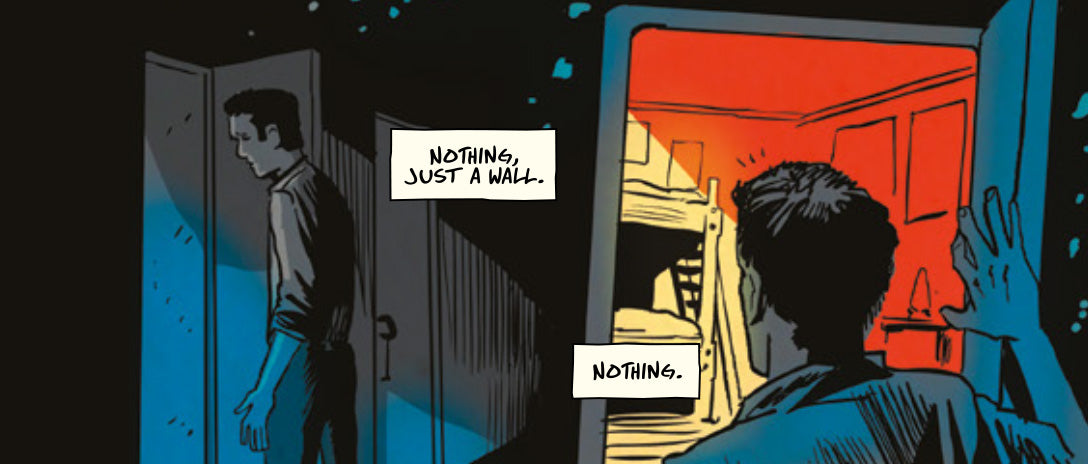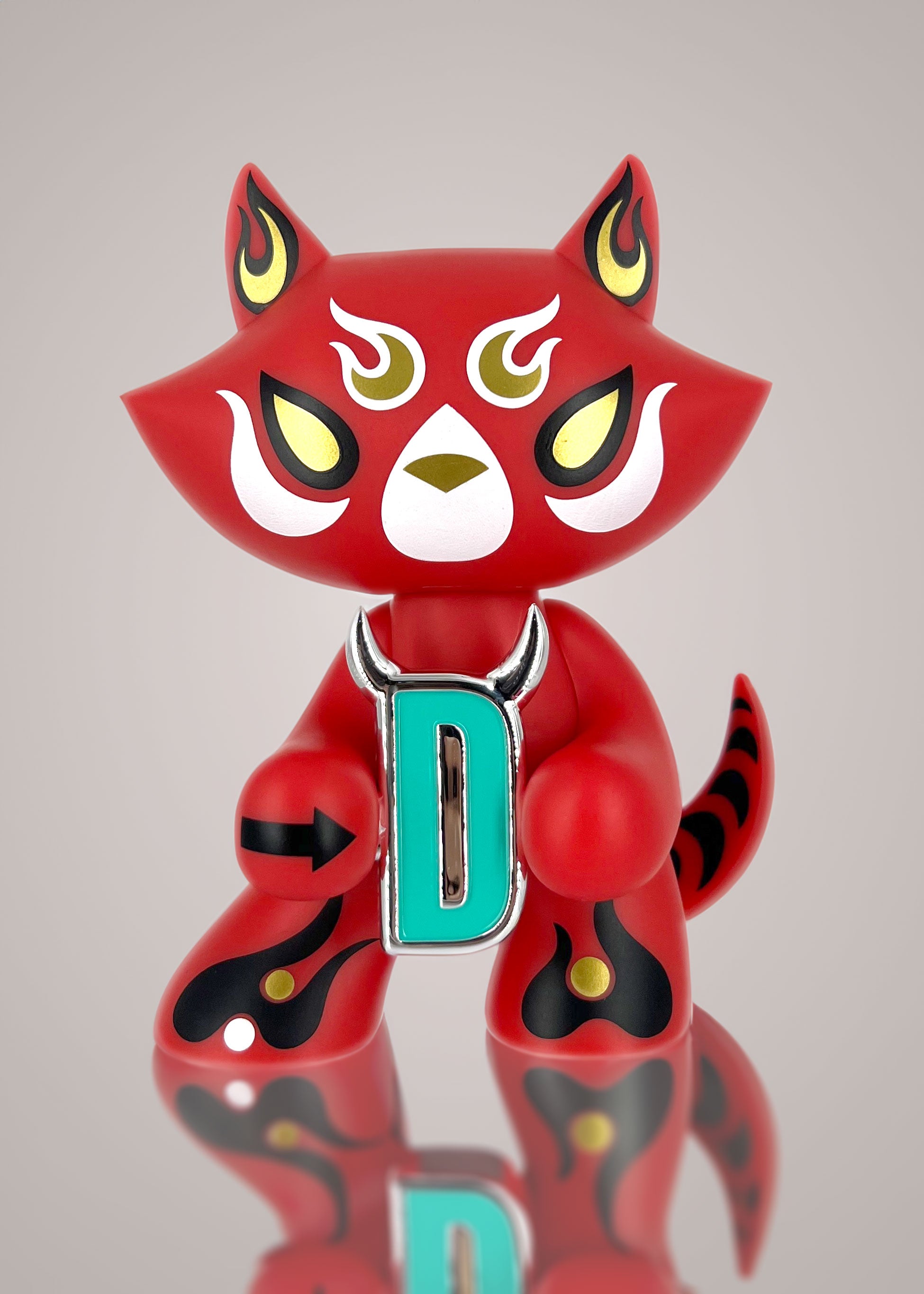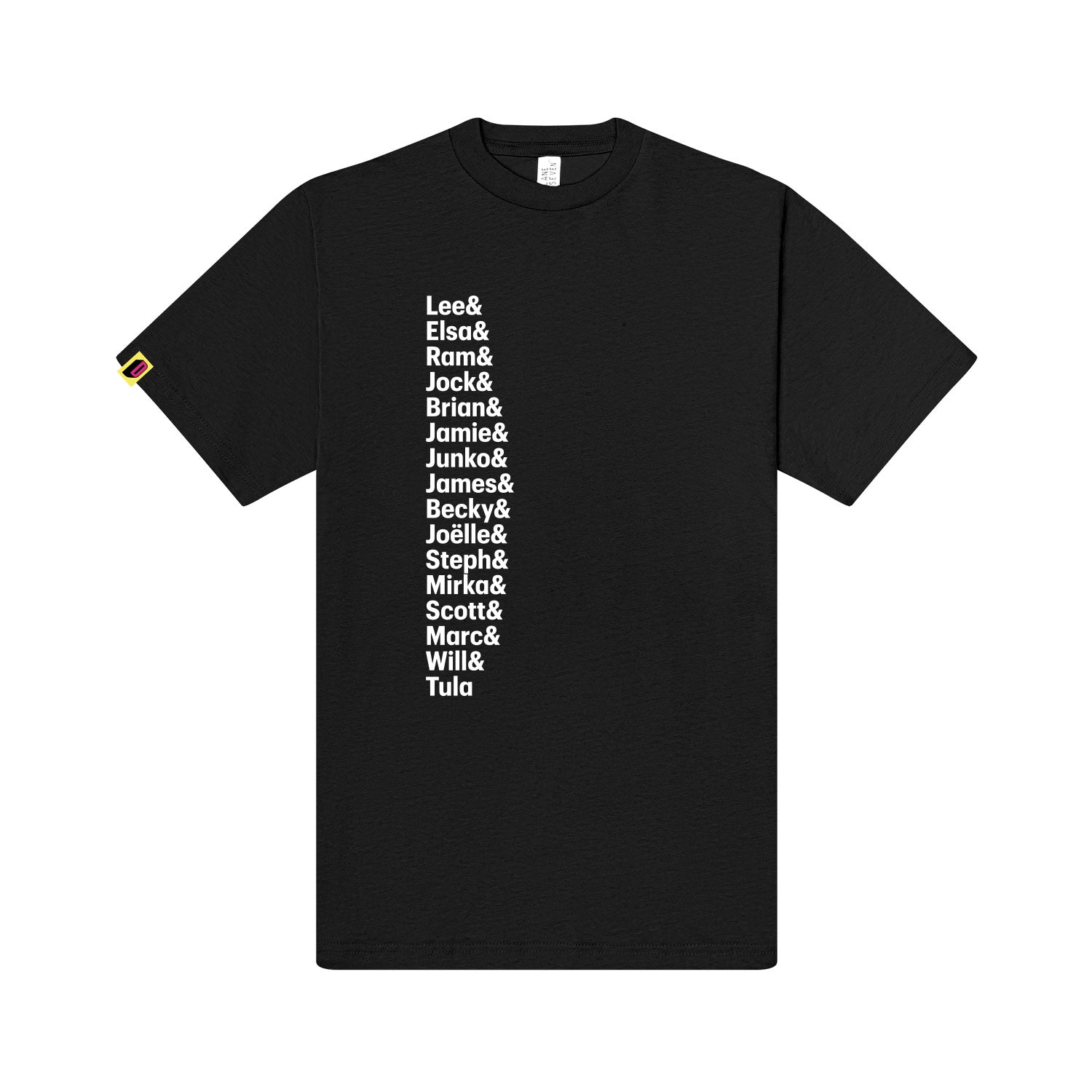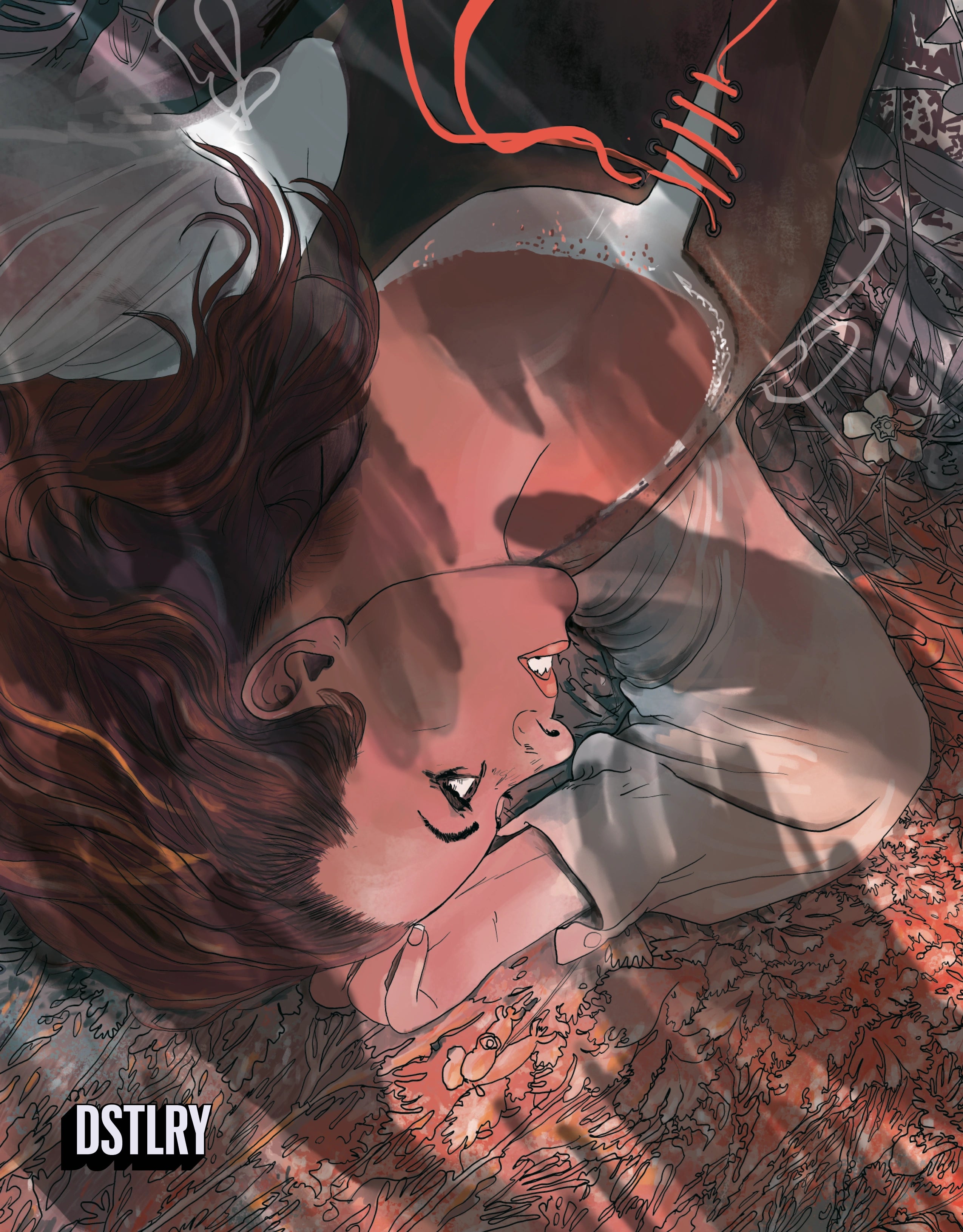10 Questions with LIFE's Brian Azzarello, Stephanie Phillips & Danijel Žeželj

In two short months, one of DSTLRY's most ambitious comics series will crash land onto shelves: LIFE by Brian Azzarello, Stephanie Phillips, Danijel Žeželj, and Lee Loughridge. A hard sci-fi descent into crime and retribution, the innovative flipbook follows a group of criminals setto raid a (supposedly) abandoned mining planet and the colony of artificially immortal prisoners left to rot on that same outpost.

Life #1 Cover A by Danijel Žeželj
Throughout the course of LIFE's six issues, the two factions will collide violently as their backstories unfold. Life #1 is available to preorder at your local comic book store before July 17th, and will be on sale in late August.

Life #1 Cover F by Riley Rossmo
For a free glimpse at the interstellar carnage to come, check out DSTLRY's free digital Ashcan for LIFE #1—available for a limited time.
Brian, Stephanie, and Danijel laid out the foundation of their project and the collaborative steps to usher it into reality in the Q&A below, facilitated via CBR's Sam Stone.
Before diving in, check out Brian, Stephanie, and editor Will Dennis on the latest episode of DSTLRY's Happy Hour:
Let's start at the beginning: How did the idea for LIFE come about?
Brian Azzarello: It started with a question, then an explanation, then an answer; I’m working on a story.
Stephanie Phillips: I was working on a story idea and talking it over with Brian, who actually had a similar idea from years ago. As we started discussing both concepts, we realized they could be combined into something really interesting, which is partially where the double stories come from. We are using what started as one story about a heist and one about a prison break, and then watching those stories interact and come to blows.
Brian and Danijel, this is your biggest collaboration since El Diablo (with additional work on Loveless). How was working together on this project?
Danijel Žeželj: It’s great working with Brian again. His work opens new doors and windows every time. It’s smart, unpredictable, provocative, violent, and visceral. It always surprises me and sometimes pushes me where I rather wouldn't go. And I’m really happy to be working with Stephanie for the first time, it’s been a great trip so far, challenging and rewarding.
Azzarello: I’m thrilled to be working with Danijel again; the way he creates mood is second to none. He’s got an uncanny ability to communicate what characters are feeling–not just saying, if that makes any sense. It does to me.
Brian and Stephanie, this is the first time you're writing together. How has it been building this world and story together?
Phillips: I’ve said it before, but it’s really like building a puzzle with someone. In this case, that someone happens to be Brian Azzarello, which is pretty dang cool. We also have two really different voices, so it’s been about building a puzzle where both our voices are present and one of us isn’t taking over from the other.
Azzarello: Every time I collaborate with another writer I learn a different way of thinking, of approaching a narrative. This time, I’m learning I’m not as logical as I thought I was. It’s fascinating.
All of you have plenty of science fiction experience. How did you want to make the world of LIFE unique, both narratively and visually?
Phillips: The number one way was to bring in Danijel to make a really incredible looking prison planet. And he really did just that. A lot of the cool sci-fi details are all coming from Danijel, so I think a big part of our job is giving him scripts where he gets to have fun with that kind of world building along with us. We were also considerate of the fact that these are prisoners from a future Earth, so while some of their crimes might be recognizable, there are other prisoners facing crimes for use of technologies that are currently only beginning to exist in real-life. For example, one of the prisoners hacked a food processing machine and killed thousands by corrupting the code.
LIFE is presented in a flipbook format. What was it about this presentation that you wanted to utilize for this series?
Philips: I think it just makes the most sense when we are bringing a story with two competing narratives and two writers. We played with a few other ideas for format, but the size of the DSTLRY books ended up making it an easy decision—we would use their pre-existing format and then just play with it, creating the flipbook. I think it really helps gives readers a way to literally engage with the story.
Azzarello: Sometimes a gimmick makes sense. Wait, that would mean it wasn’t a gimmick anymore…
Danijel, there is a fantastic variety of sci-fi environments you've created for this series. How was it working with Lee Loughridge to bring this all to life?
Žeželj: The beauty of sci-fi is that it offers an infinite space for imagination to run free, which is also a problem since that space has been already explored in a thousand ways and it’s hard to add anything new. Lee and I worked together for the first time quite recently on the series Nostalgia, and then again on another project that hasn't been published yet. My work is not the easiest to color, it’s not a linear drawing style; it’s based on light and darkness. Nevertheless Lee did an outstanding job with it, perfectly understanding what it needs and adding a whole new layer to it and to the story. And I’ve never worked with anyone so fast and efficient.
Brian and Stephanie, how was it developing and plotting out these various characters and arcs and how they collide, Iñárritu-style?
Phillips: It’s a little like building a puzzle. We propose different pieces from each side of the story and then try to see which pieces fit the best together as we work. It’s a really different way to create a comic and has a little in common with a “call and response” style of creating, as we are trying to have both sides feeding each other back-and-forth.
Azzarello: The hard part is keeping in mind these are two separate stories, and an action raised in one won’t necessarily be answered in that story. It’s Newton’s Third Law, but you may have to flip the book to get your equal and opposite reaction.
Memory and time are very prominent themes in LIFE. How did you want the story and characters to speak to those themes?
Azzarello: That’s a hell of a question… Subtly and clearly I hope? We’re dealing with criminals in LIFE, so there’s going to be elements of living in the past and trying to escape it. Both things, by the way, are impossible to do.
How has it been developing this book at DSTLRY and editor Will Dennis?
Phillips: Let me answer it this way—if we weren’t developing this story with Will, it would be incredibly difficult. Will is the best at what he does. But no one needs me to tell them that… just look at his resume. We’re lucky to have him on the project.
What else do you want to tease for readers ahead of LIFE's launch?
Phillips: The book is better written than my responses to these questions?

















